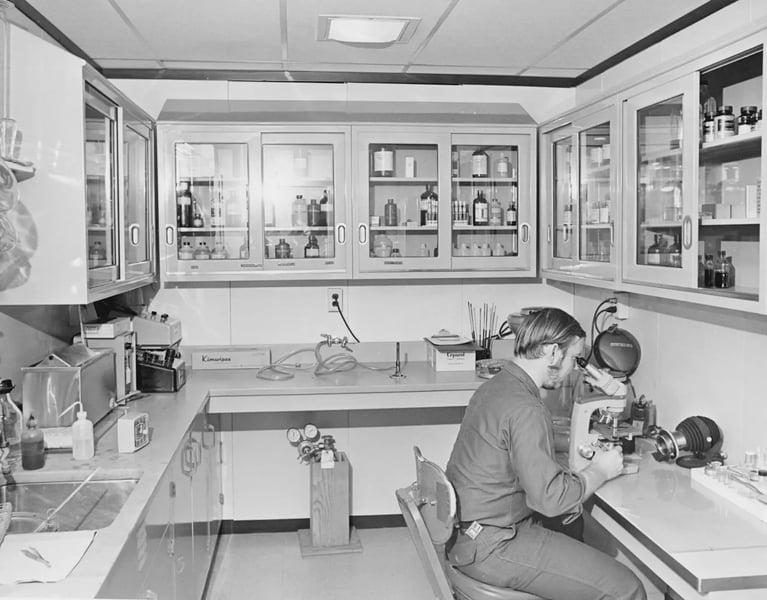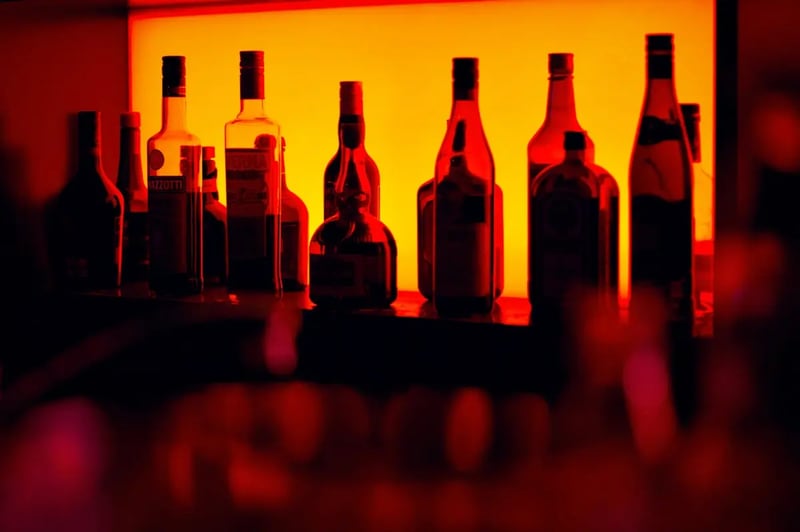
EtG Calculation Formula Guide
The EtG calculation formula is the quiet engine that makes our Realistic EtG Calculator trustworthy. If you have ever wondered how a computer can turn your drink count into a prediction of when you will pass a urine EtG test, this page is for you. We will translate the science behind Ethyl Glucuronide (EtG) into everyday language so you can run calculations with confidence.
Why EtG Formulas Matter
Ethyl Glucuronide is a direct metabolite of alcohol. Unlike the buzz you feel, EtG sticks around and is detectable in urine for up to 80 hours. Courts, treatment programs, and employers rely on EtG testing because it provides an objective view into recent drinking.
A realistic EtG calculator has to do two things well:
- Estimate the highest EtG concentration your body reached after drinking.
- Project how fast that concentration falls until it dips below the cutoff level.
The formulas below use research-backed assumptions so the estimates align with typical laboratory observations.
Core EtG Calculation Formulas
The Half-Life Decay Model
At the heart of every credible EtG calculation is a half-life curve. For EtG the published half-life ranges from 2.5 to 6 hours. We use an average of 5 hours while reminding you that individual metabolism varies.
The formula looks like this:
C(t) = C0 × (0.5)^(t / T1/2)What it means: The EtG concentration decreases exponentially over time. Each passing of one half-life (5 hours) cuts the remaining concentration in half.
C(t)is the EtG concentration at timetafter your last drink.C0(C-zero) is the peak EtG level right after absorption.T1/2is the half-life—5 hours in our calculator.tis the number of hours that have passed since you stopped drinking.
Estimating Peak EtG Concentration
Before you can watch EtG levels drop, you need to know how high they start. Our calculator uses this formula:
C0 = (Standard Drinks × 35000) / (Weightkg × GenderFactor)What it means: Your peak EtG level depends on how much you drank, your body weight, and your biological sex. Smaller bodies reach higher peaks.
- Standard Drinks counts each serving with roughly 14 grams of pure alcohol.
- Weightkg is your body weight in kilograms.
- GenderFactor reflects body water differences: 1.1 for males and 1.3 for females.
The constant 35,000 comes from population studies measuring typical EtG peaks per drink.
Solving for Time to Reach a Cutoff
The last step is to solve for the number of hours until EtG slides below the cutoff your lab uses:
t = T1/2 × log(Ctarget / C0) / log(0.5)What it means: This calculates how many hours you need to wait until your EtG level drops below the test threshold.
Where Ctarget is either 500 ng/mL for standard testing or 100 ng/mL for high-sensitivity programs.
Understanding Input Factors
Accurate inputs produce better estimates:
- Count drinks accurately. Use our Standard Drink Guide to translate mixed drinks into precise standard drinks.
- Record the final sip. Enter the time you swallowed your last drink, not the start of your night.
- Measure weight honestly. The calculator is anonymous. Accurate weight improves the peak estimate.
- Select the correct test sensitivity. If your paperwork says 100 ng/mL, choose the high-sensitivity option.

Step-by-Step Calculation Examples
Example 1: Moderate Drinking Scenario
Jordan, a 68 kg female, enjoyed four strong cocktails at a weekend party and stopped drinking at 11:30 PM.
- Convert drinks. The cocktails were about 1.5 standard drinks each, totaling 6 drinks.
- Estimate the peak.
- Standard Drinks = 6
- Weightkg = 68
- GenderFactor = 1.3
C0 = (6 × 35000) / (68 × 1.3) ≈ 2361 ng/mL
- Time since last drink. It is now 9:30 AM, exactly 10 hours later.
- Choose cutoff. Jordan is on a probation program using the 100 ng/mL test.
- Find remaining time.
t_total = 5 × log(100 / 2361) / log(0.5) ≈ 44.5 hours- Time already passed = 10 hours
- Remaining time = 34.5 hours
- Calendar estimate. Jordan should plan to test after 9:30 PM the following day.
Example 2: Light Drinking Scenario
Alex, an 80 kg male, had two beers at a social gathering and stopped drinking at 8:00 PM.
- Convert drinks. Two standard beers equal 2 standard drinks.
- Estimate the peak.
- Standard Drinks = 2
- Weightkg = 80
- GenderFactor = 1.1
C0 = (2 × 35000) / (80 × 1.1) ≈ 795 ng/mL
- Time since last drink. It is now 8:00 AM, exactly 12 hours later.
- Choose cutoff. Alex needs to pass a 500 ng/mL test.
- Find remaining time.
t_total = 5 × log(500 / 795) / log(0.5) ≈ 3.3 hours- Time already passed = 12 hours
- Remaining time = 0 hours (already below threshold)
- Calendar estimate. Alex can test immediately, but adding a 6-12 hour buffer is recommended.
Because individual metabolism varies, we recommend adding a buffer of 12 to 24 hours beyond the calculated time.
Simulated EtG decay showing how the concentration curve intersects the 500 ng/mL and 100 ng/mL thresholds over time.
Visualizing the Decay Curve
The chart above shows how EtG concentration decreases over time:
- The blue curve tracks your projected EtG concentration.
- The red dashed line marks the 500 ng/mL cutoff.
- The amber dashed line marks the 100 ng/mL cutoff.
When the blue curve crosses a threshold line, you know when that test level is cleared.
Quick Reference Table
| Scenario | Standard Drinks | Body Weight | Pass 500 ng/mL | Pass 100 ng/mL |
|---|---|---|---|---|
| Light social outing | 2 | 86 kg | 12 hours | 24 hours |
| Weekend session | 6 | 72 kg | 28 hours | 48 hours |
| Heavy binge | 10 | 68 kg | 42 hours | 72+ hours |
Estimates use the formulas discussed above; individual metabolism may vary.
Model Limitations and Important Factors
No formula can capture every detail of human biology. Variables that can affect EtG detection:
- Chronic heavy drinking can saturate tissues, producing higher peaks.
- Liver impairments slow down metabolism, stretching the half-life.
- Medications or illnesses alter hydration and kidney function.
- Diluted urine might trigger retests even if EtG levels are below the cutoff.
Always use the output as an estimate, not a guarantee. When stakes are high—such as court appearances or custody hearings—add generous buffer time and consult a healthcare professional.
Frequently Asked Questions
Does the calculator guarantee a pass?
No. The EtG calculation formula provides realistic estimates, but results can vary because your metabolism, hydration, and lab procedures are unique. Always add safety time.
What if I drank over several days?
Enter the total number of standard drinks and the time of your last sip. Multi-day sessions keep EtG elevated longer, so expect a longer detection window.
Can I use the formula for blood or hair tests?
This guide focuses on urine EtG testing. Blood and hair rely on different biological processes and detection ranges, so you would need specialized models for those tests.
Should I change the half-life number manually?
Most users can rely on the default 5-hour half-life. Advanced users can experiment with values between 2.5 and 6 hours to reflect personal experience, but treat the results cautiously.
How accurate is the 5-hour half-life?
The 5-hour half-life is an average based on population studies. Individual half-lives range from 2.5 to 6 hours depending on liver function, hydration, and metabolism. The calculator uses 5 hours as a balanced middle ground.
Final Reminder
The EtG calculation formula is a tool for clarity, not a loophole. Use it to stay accountable, plan sober days, and reduce stress. Always add buffer time beyond the calculated window for safety.
Related Resources
- Realistic EtG Calculator - Apply these formulas with your own numbers
- Standard Drink Guide - Learn to count drinks accurately
- EtG Detection Times Guide - Understand testing windows
- Get Help - Free, confidential resources for support
Disclaimer: This page is for educational purposes only and does not constitute medical or legal advice. EtG calculation results are estimates with a ±20-30% margin of error. For high-stakes situations, consult a healthcare professional.
